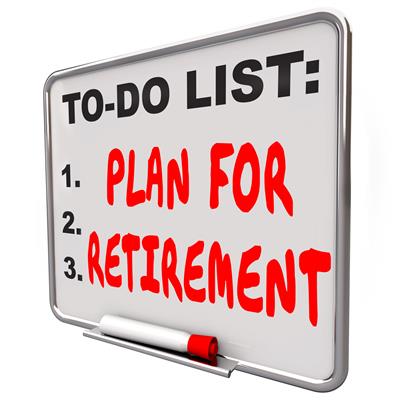by Karina Gafford

Photocredit: iQoncept/Dollar Photo Club
If you use media trends as any indication, everyone is downsizing. Whether you’re a senior military family, recently retired from the military, or another mid-career Generation X professional living in your big "forever home" in the suburbs, the thought of downsizing to prepare your family for retirement has likely crossed your mind, too.
It may look like everyone is downsizing, but that’s not necessarily true. Even if it were, it may not be the best choice for your family. Let’s look at the supposed trend, what’s at the root of the trend, why you may need to prepare to have more space in your home (not less!), and what options you have for your family if you don’t choose to downsize.
The Great Downsize: the Tiny House Trend Myth
If you watch a few episodes of one of the latest "tiny house" shows--TV shows that feature families living in homes of 400 square feet or less--you might get the impression that the entire nation is on the verge of embracing what essentially amounts to perma-mobile home living. By all accounts, the carbon footprint police have won and we’re all purging our belongings to live in eco huts!
These shows typically feature millennials embracing downsized digs in efforts to live a debt-free lifestyle while pursuing their dream careers. Millennials aren’t the only ones they feature embracing downsized digs, though. The other generation most often featured are the Baby Boomers who seem to be buying up tiny homes en masse to avoid hefty mortgage payments in retirement.
After watching their parents and grandparents struggle to pay their bills through the recession, many millennials recognize the merits of minimizing their cost of living by keeping their rent or mortgage payments low. Heck, they have to keep their housing payments low so that they can pay off student loans, car loans, and even begin to consider funding their retirement. But what about the Baby Boomers? Just how accurate are these shows?
According to the US Census in 2010, the average size of a new single family home built was 2,392 square feet. In 2014, however, the Census reports that the average size of a new single family home built was 2,453 square feet, reflecting a small but significant growth in the average size of a home of a total of 61 square feet in just four years.
What the research reveals is that the tiny house market remains a niche one. In fact, CNN reports that the market for houses of 1,400 square foot or less has shrunk from a 9% market share in 2005 to just 4% of the market in 2015. Meanwhile, the growth of houses that exceed 4,000 square foot has accelerated, reflecting the return of the pre-recession McMansions.
As you can clearly see, not only is downsizing not a trend, but the reverse seems to apply. Our homes are growing in size.
What to Do About Your Big Mortgage
Along with the growth in the size of houses comes the growth in size of housing prices with the average house price growing over 5% to $235,000 in 2015. That’s a big chunk of change, and one that may prompt many to consider downsizing, but consider an alternative. If you’re a Generation X military family, you may still be supporting your millennial children and perhaps your older parents.
Millennials are still largely living either with their parents or with roommates, and many Boomers are still stuck in their homes because they either haven’t enough equity to sell or they still have adult children who have not yet moved out. Boomers are largely still recovering from the huge hits their homes took during the housing crash. Approximately 45% of Baby Boomers remain in their single-family homes and a total of less than 20% have children under the age of 18 still living in their home.
Millennials will eventually move out, though.
The Generation Z children (under age 20) of the Baby Boomers will eventually move out, too.
Pew Research studies suggest that the Baby Boomers may initially choose to live by themselves, but they’re also likely to move in with you, Generation X. Given the financial insecurity of Boomers in the post-recession era, you may also want to consider space in your home for an in-law suite as it is much more cost effective than paying for a senior living facility. Boomers are the "Sandwich Generation." They’re currently paying for their millennial children and their aging parents, but they also lost substantial portions of their retirement accounts in the recession, leaving them with a rocky financial future. Over 70% have delayed their retirement, and almost one-fifth don’t believe they’ll ever be able to stop working.
Why You May Actually Need More Space
Taking a long-term perspective, if the Boomers continue to support two generations when they can’t even support their own retirement needs, who is going to support them when the inevitable hits and they can no longer work?
That’s where you may have wished that you didn’t downsize just because it seemed like the smart, trendy thing to do.
What Can You Do Instead of Downsizing?
Instead of downsizing, you could instead focus on creating a stronger financial future for your military family by building your savings and reducing your mortgage debt.
A good mortgage scenario for a military family could look something like this:
- Take out a 15-year mortgage--after you’ve completed an average duty station of three years, you would have also completed roughly one-fifth of your mortgage, leaving you in a strong equity situation (assuming no economic financial meltdown) to sell at PCS time if you so choose.
- Set up bi-weekly payments.
- Set up an allotment when you receive your promotion raise. Don’t fall into the promotion car trap! Divert that money into your mortgage before it ever hits your bank account; your future will thank you.
Then, when the time comes to support your Boomer parents (or your own adult children), you’ll have both the space and the savings to do so.3
